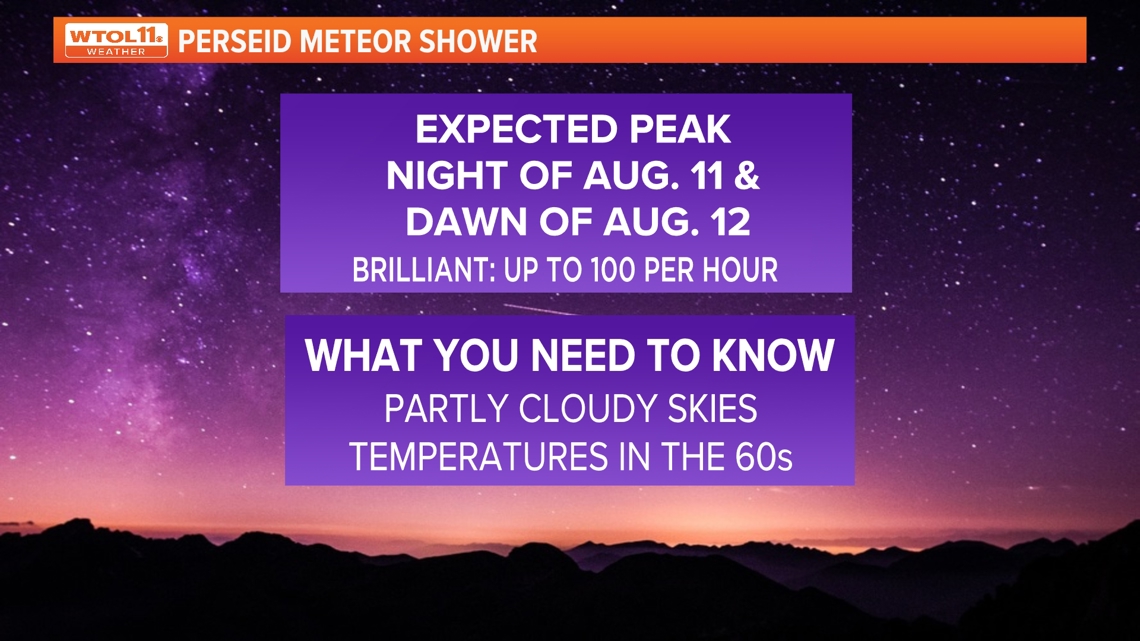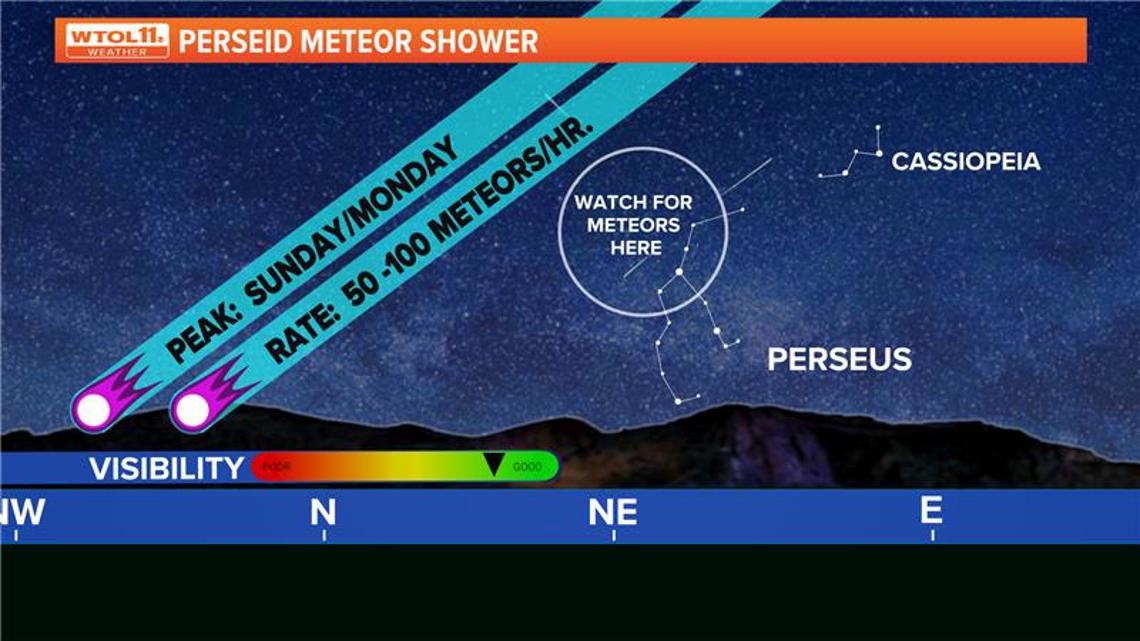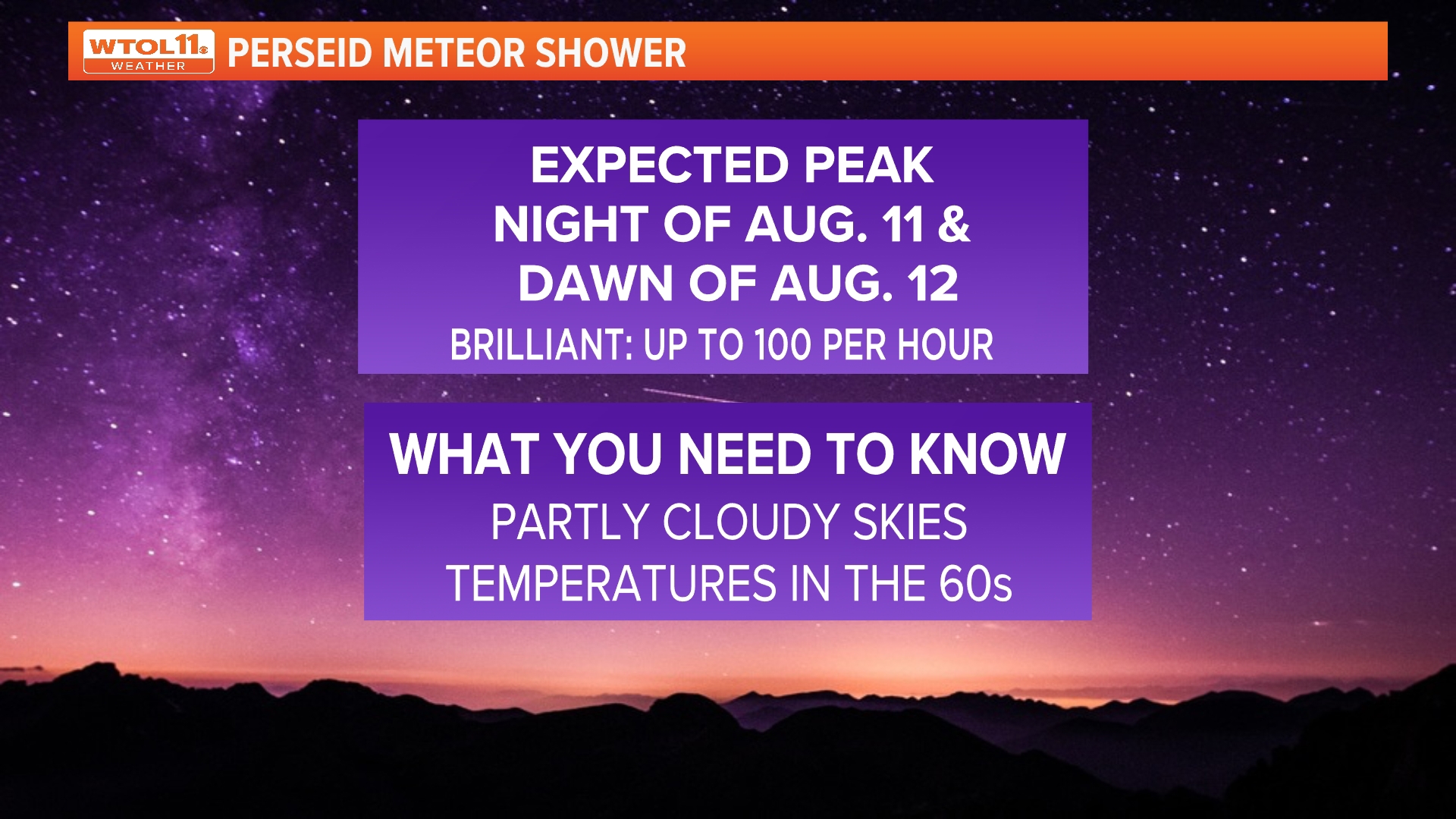TOLEDO, Ohio — The Perseid Meteor Shower will make its return this weekend, bringing a display of "shooting stars" to Earth that you can see in your own backyard. Here's how to see it this year.
What causes the Perseids?
The Perseids are a stream of debris from a comet called "Swift-Tuttle" that takes approximately 133 Earth years to orbit the Sun once. Each year, in mid-August, the Earth in its orbit passes through the leftover debris from the last time the comet visited the inner solar system, which was in 1992, according to NASA.
When the Earth passes near this stream of debris, some of the leftover parts of the comet stream enter Earth's atmosphere, where friction (which is absent in the vacuum of space) causes them to burn, producing the light you see during a meteor shower like the Perseids.
When and where can I see it?
Though the Perseids technically began in mid-July and last through late August, the shower is typically at its peak between Aug. 11 and 13. This year, it will be at its peak late Sunday night and into the early hours of Monday morning.
Some years, the light emitted by the meteoroids as they fall are comparatively dimmed by a bright moon. In 2022, the full moon on Aug. 12 made it difficult for observers to see the shower.


However, on Aug. 12 this year, the moon will be in its first-quarter phase, meaning that while it won't totally blot out the light of the meteor showers, it also won't be completely dark. The moon will be in the southwest while the shower is in the northeast, though, meaning you won't have to contend with the moon's light directly.
The Perseids appear to come out of what's called a "radiant point" just above the constellation Perseus, from which the event derives its name. The radiant point will be visible above the horizon at approximately 10 p.m. in the north-northeast. As the night goes on, the Perseids will appear to move up and slightly eastward. By 1 a.m., the star Capella and the Pleiades Cluster will join the Perseids in the sky, in addition to Uranus and Jupiter.
The diagram below shows where the Perseids will be visible this weekend.


Light pollution - Where to find a local dark sky
A crucial part of seeing the Perseids, as is with most astronomical phenomena, is making sure light pollution does not blot out your view.
Fortunately, the moon's waning crescent phase and position in the sky will improve viewing opportunities for everyone.
Additionally, you can improve your viewing experience by finding a darker area, such as a park open after dark or a rural area.
Light pollution is measured on something called the Bortle Scale. A ranking of 1 is true darkness, while 9 is the highest and brightest. Even if you live in a densely populated area, there's nothing a quick drive out into the country can't solve for hopeful astronomers. With less light pollution, spotting the showers is much easier.
Click here for an interactive map of light pollution in your area.
Wherever you choose to view these "falling stars" (which of course are not so much stars as they are bits of debris as burning up in Earth's atmosphere), be sure to abide by local guidelines and respect other's property lines.
WATCH MORE FROM WTOL 11

